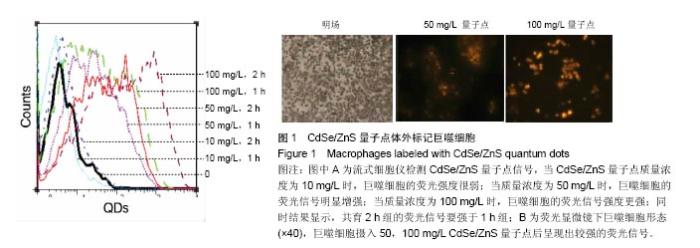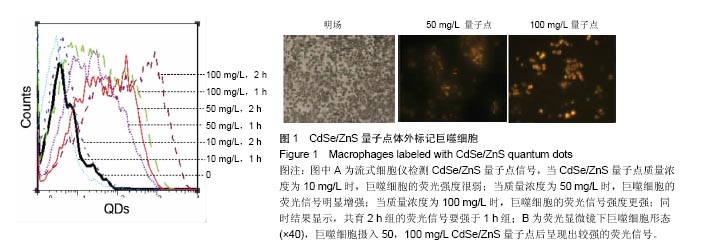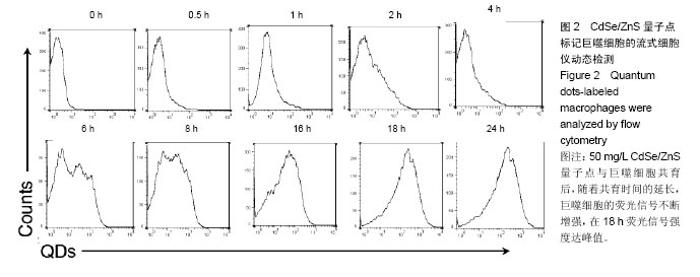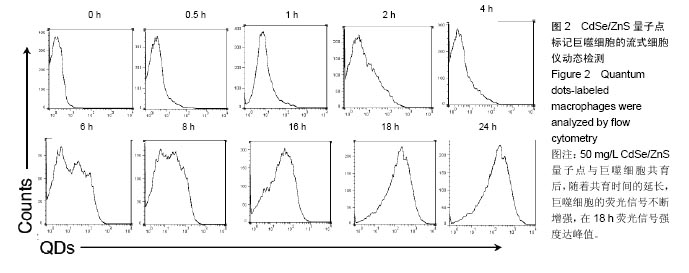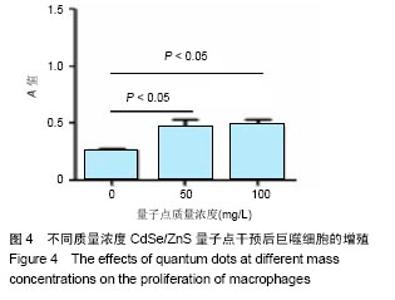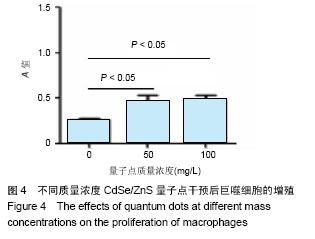| [1]Erwig LP,Gow NA.Interactions of fungal pathogens with phagocytes.Nat Rev Microbiol. 2016;14(3):163-176. [2]Hild WA,Breunig M,Goepferich A.Quantum dots - nano-sized probes for the exploration ofcellular and intracellular targeting.Eur J Pharm Biopharm.2008;68(2):153-168. [3]Kamila S,McEwan C,Costley D,et al.Diagnostic and Therapeutic Applications of QuantumDots in Nanomedicine. Top Curr Chem.2016;370:203-224.[4]Hardman R.A toxicologic review of quantum dots: toxicity depends onphysicochemical and environmental factors.Environ Health Perspect.2006;114(2):165-172.[5]Qu G,Wang X,Wang Z,et al.Cytotoxicity of quantum dots and graphene oxide to erythroid cells and macrophages. Nanoscale Res Lett.2013;8(1):198.[6]Liu Q,Li H,Xia Q,et al.Role of surface charge in determining the biological effects of CdSe/ZnSquantum dots.Int J Nanomedicine.2015;10:7073-7088.[7]Guleria A,Rath MC,Singh AK,et al.Rapid and One-Pot Synthesis of Self-Assembled CdSe Quantum Dots Functionalized with β-Cyclodextrin: Reduced Cytotoxicity and Band Gap Engineering.J Nanosci Nanotechnol. 2015; 15(12): 9341-9357.[8]Jayagopal A,Su YR,Blakemore JL,et al.Quantum dot mediated imaging of atherosclerosis. Nanotechnology. 2009; 20(16):165102.[9]Chakravarthy KV,Davidson BA,Helinski JD,et al. Doxorubicin-conjugated quantum dots to target alveolar macrophages and inflammation. Nanomedicine. 2011;7(1): 88-96.[10]Barr TA,Krembuszewski M,Gupta M,et al.Quantum dots decorated with pathogen associated molecular patterns as fluorescent synthetic pathogen models.MolBiosyst. 2010;6(9): 1572-1575.[11]Pati R,Sahu R,Panda J,et al. Encapsulation of zinc-rifampicin complex into transferrin-conjugated silver quantum-dots improves its antimycobacterial activity and stability and facilitates drug delivery into macrophages. Sci Rep.2016;6: 24184. |
